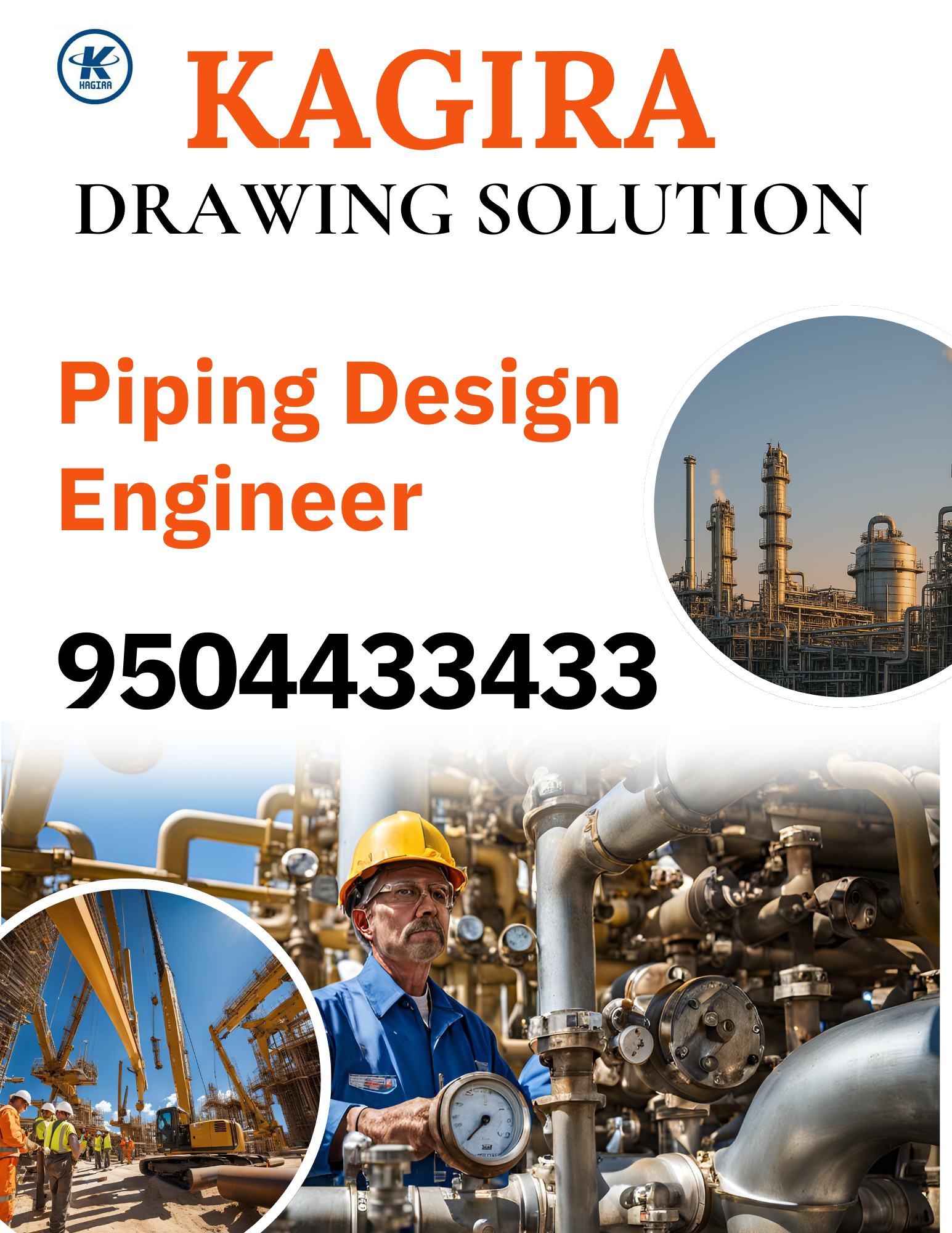Piping Design Engineer

In the rapidly evolving world of industrial infrastructure, Piping Design Engineering plays a crucial role in the design, construction, and maintenance of process plants such as refineries, petrochemical units, power plants, and water treatment facilities.
Module 1: Fundamentals of Piping Engineering
-
Introduction to Oil & Gas and Process Industry
-
Plant types: Refinery, Power Plant, Petrochemical
-
Flow diagrams: PFD, P&ID, UFD
-
Line list and process data sheets
Module 2: Piping Components & Specifications
-
Pipe classifications and schedule selection
-
Pipe fittings: Elbows, Tees, Reducers, Caps
-
Flanges and Gaskets: ANSI/ASME types
-
Valve types and symbols in P&ID
-
Preparation of Piping Class / PMS
Module 3: Equipment & Plant Layout
-
Equipment types: Pumps, Vessels, Columns, Heat Exchangers
-
Nozzle orientation and equipment layout
-
Plant layout principles
-
Development of plot plans and equipment layout
Module 4: Piping Layout Design
-
Piping routing techniques
-
Piping around pumps, compressors, turbines
-
Utility stations and drains
-
Consideration for maintenance and safety
-
Pipe rack layout and underground piping
Module 5: Pipe Supports
-
Support types: Rest, Guide, Line Stop, Spring, Hanger
-
Support span calculations
-
Pipe support design basics
-
Support location strategy
Module 6: Drafting & Isometric Drawings
-
Manual isometric sketching
-
Extraction of isometrics from layout
-
Dimensioning rules and conventions
-
Bill of Materials (BOM) generation
Module 7: Software Training (Hands-On)
Primary Software Tools used in Kagira-based training:
-
AVEVA E3D / PDMS – Equipment & Piping modeling
-
AutoCAD / Plant 3D – 2D Drafting & P&ID
-
CAESAR II – Basic Piping Stress Analysis
-
Navisworks – 3D model review & clash detection
-
Excel/Word – MTO, Line List, and Report Preparation
Module 8: Piping Design Projects (Real-Time Exposure)
-
Interpretation of real P&IDs and project data
-
3D modeling of complete piping systems
-
Generating GA drawings, Isometrics, BOM
-
Preparation of final piping documentation
Deliverables/Takeaways
-
Project portfolio
-
Software proficiency certificate (if applicable)
-
Exposure to industry workflows and documents
-
Interview preparation and resume-building support
Conclusion
The demand for skilled piping design engineers continues to grow across industries where safety, efficiency, and accuracy are critical. With the right training, exposure to real-time projects, and a solid understanding of design principles, young engineers can build a rewarding career in this field. Kagira’s industry-oriented training approach equips students not just with software skills, but also with a deep understanding of engineering practices followed by top EPC companies.




